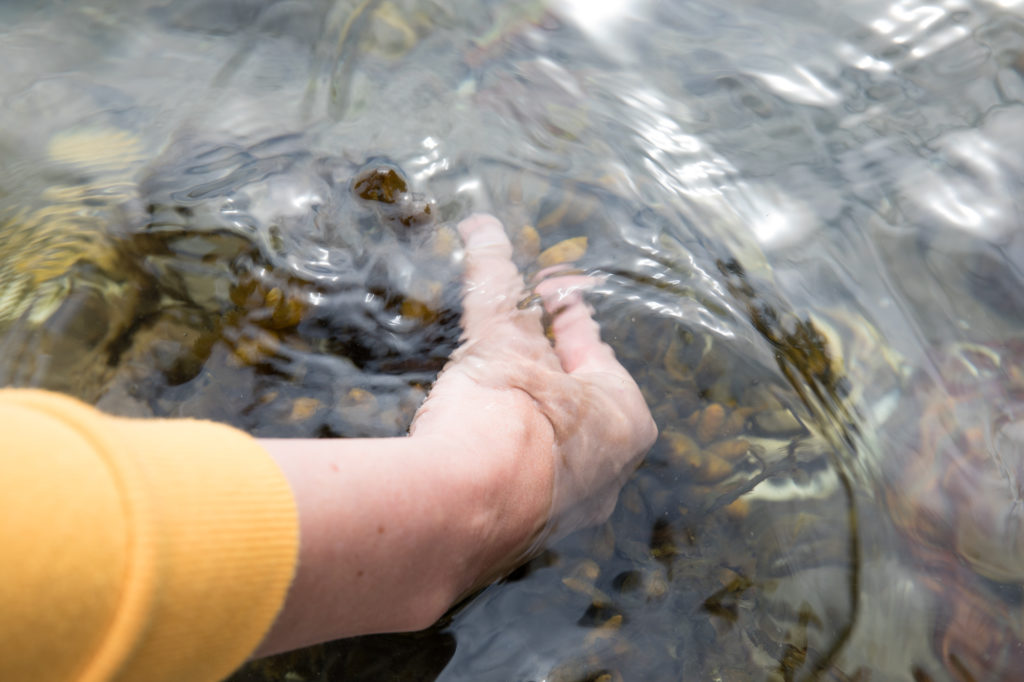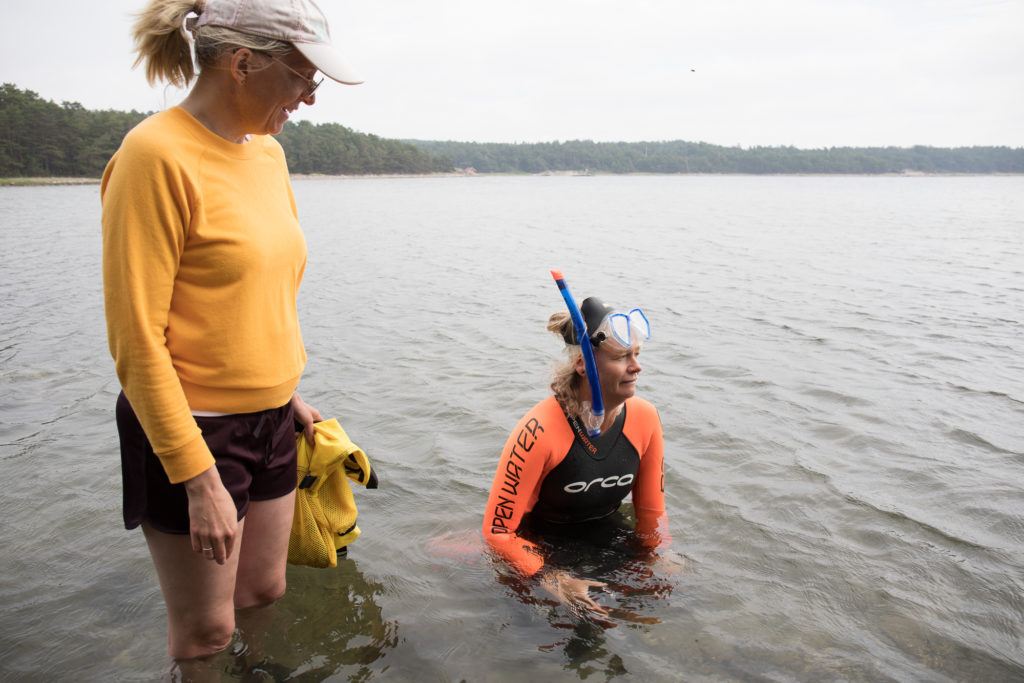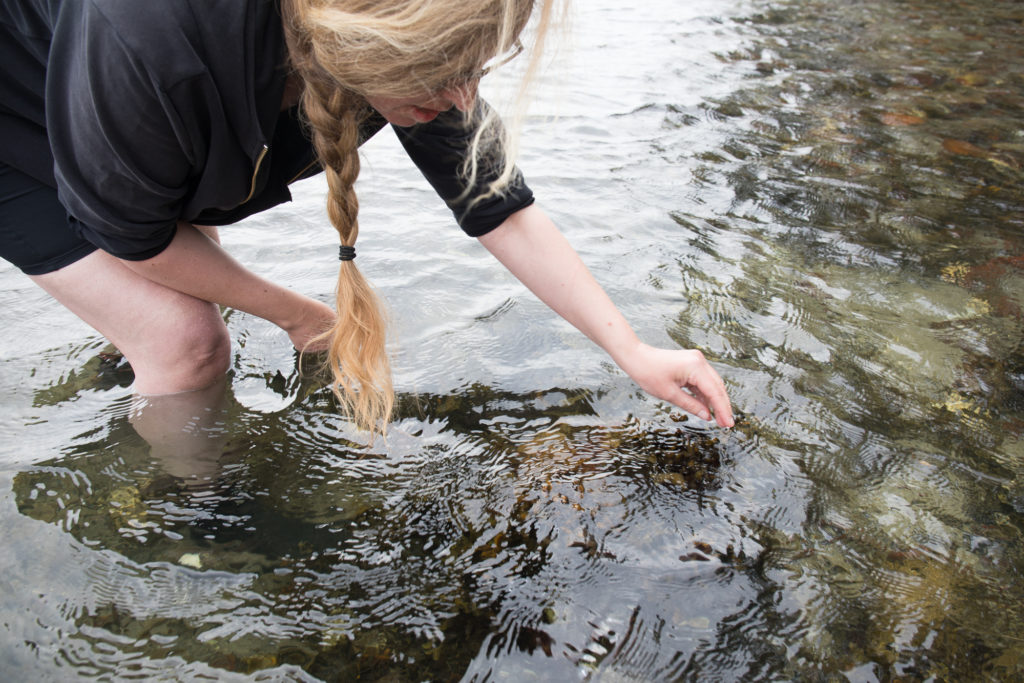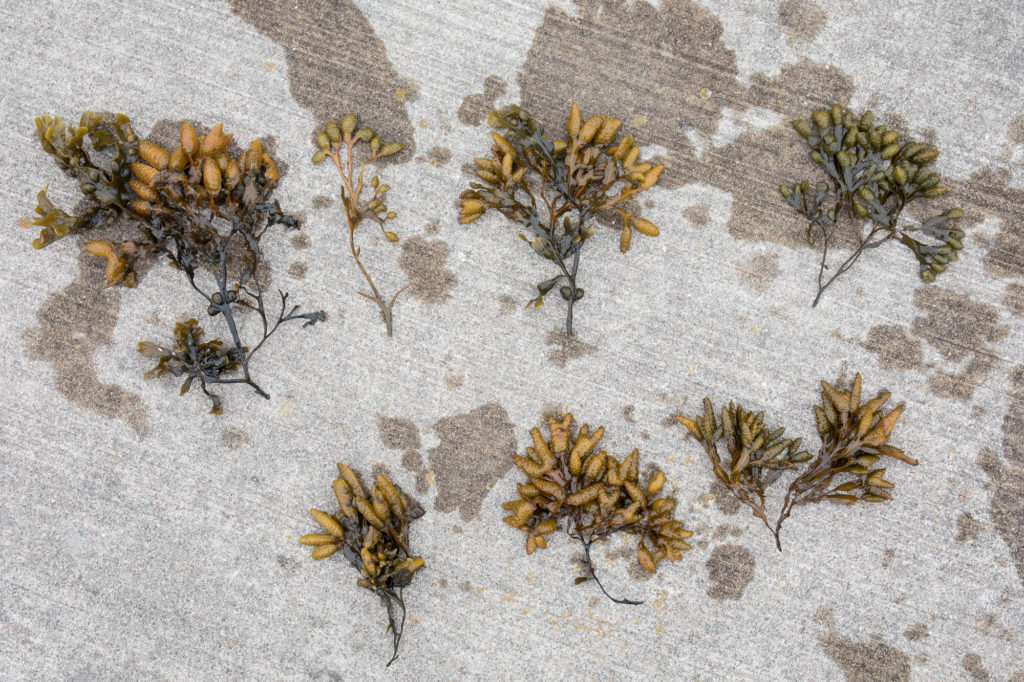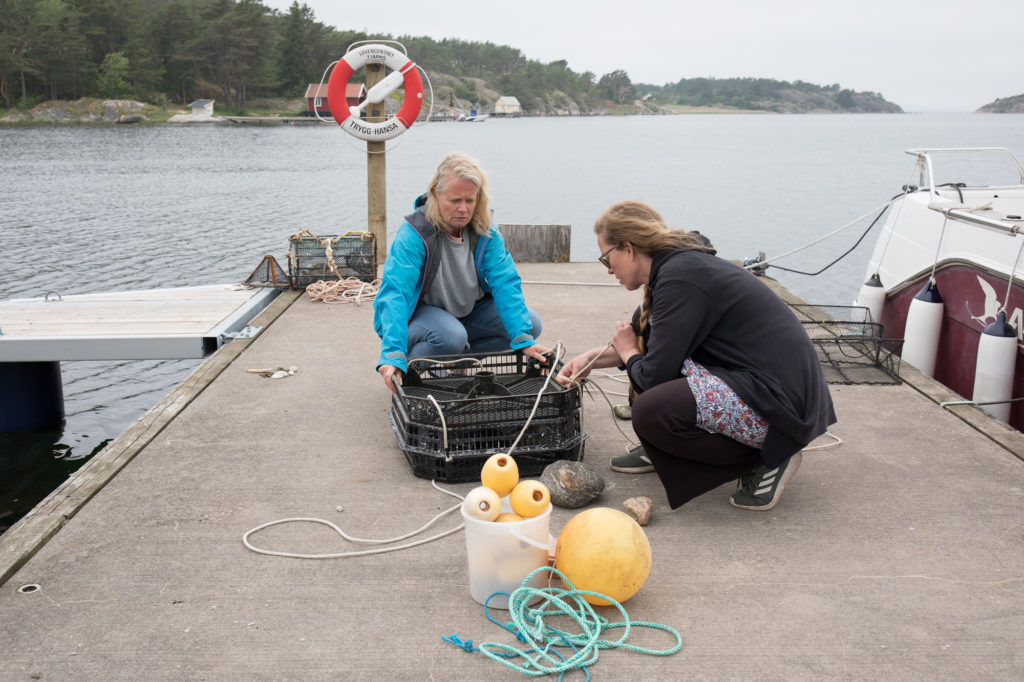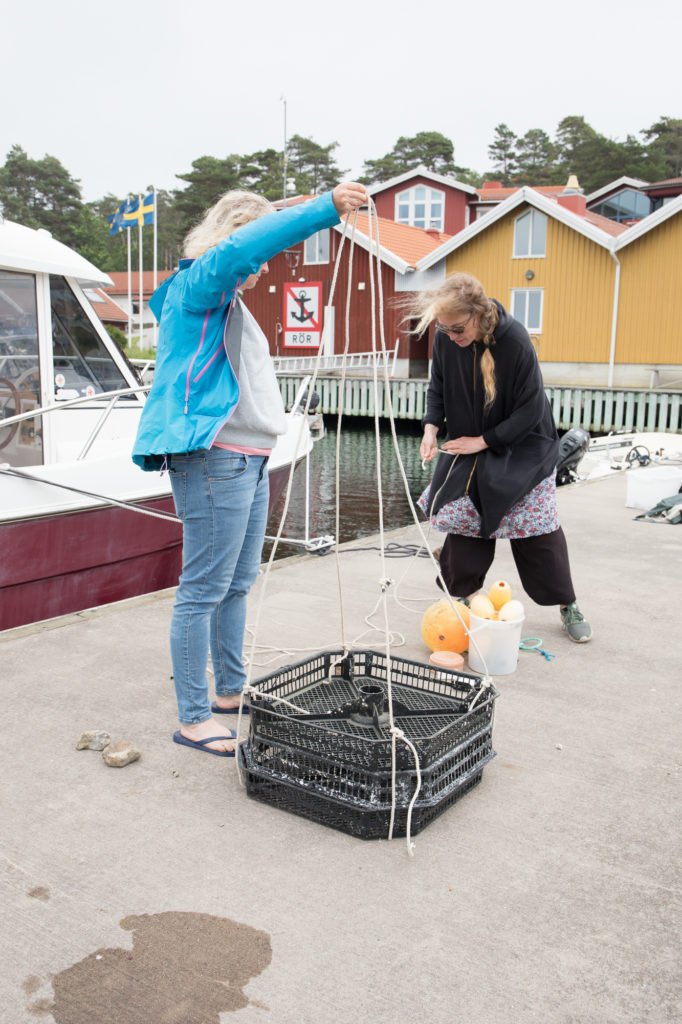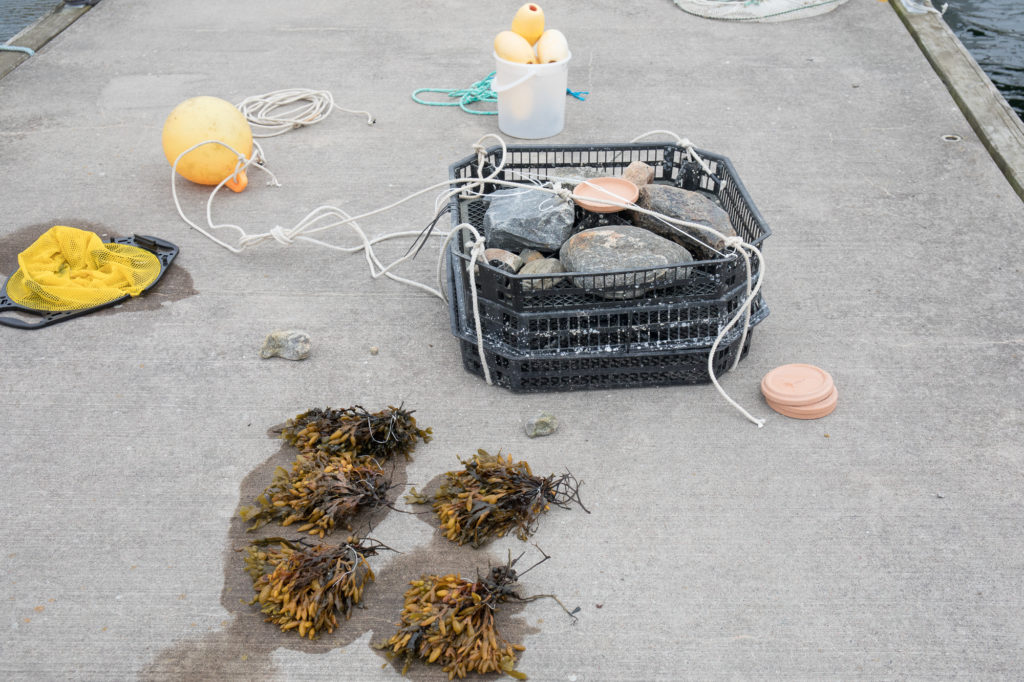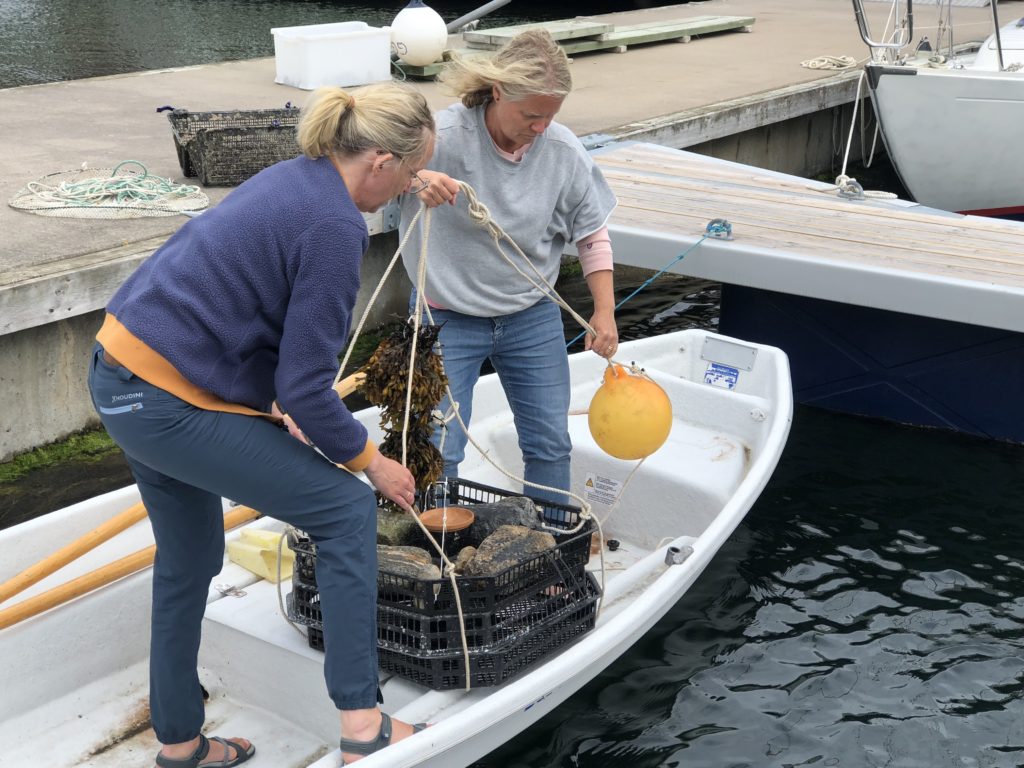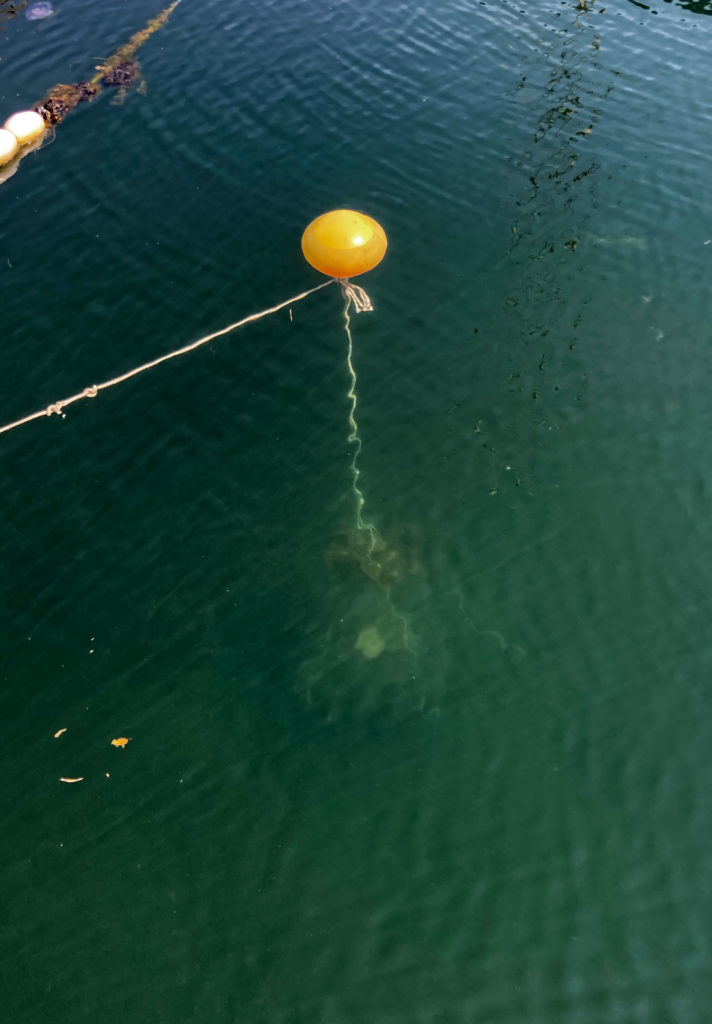
Preparing a Bladderwrack Celebration
17-19 June 2021
During our second visit to Tjärnö Marine Laboratory, we had a two-day workshop together with marine biologists Maria Bodin and Cecilia Wibjörn to exchange ideas on the possibility of future Sea Gardens, and to discuss the very different conditions that the salty waters on the west coast of Sweden and the brackish waters in the Baltic Sea present us with.
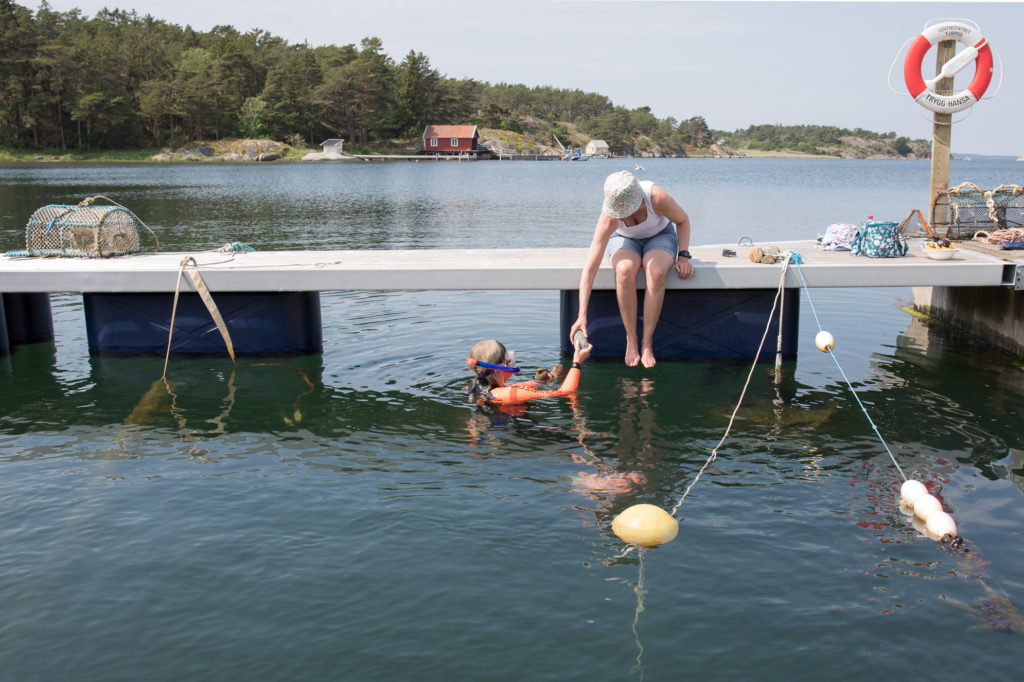
To grow brown algae such as delicious sugar kelp is no problem on the west coast. In the Baltic Sea on the other hand, the brackish waters are not suitable for sugar kelp. Bladderwrack, Fucus vesiculosus, is a brown algea that has adapted to the less salty condition, and it is a key species in the Baltic as it provides habitat for hundreds of other species. Due to eutrophication and rising temperatures, bladderwrack is in some regions in decline, or having a hard time competing for space with “grönslick”, green algae Cladophora glomerata also causing mass algal blooms.
Successful attempts at “assisted fertilization” and regeneration of bladderwrack in the Baltic Sea has been made by Lena Kautsky and Ellen Schagerström. At Tångbloggen (see also BalticSeaWeed) their inspiring, entertaining and fascinating research can be followed. Cecilia Wibjörn has also helped bladderwrack to settle as part of the project Skydd under ytan (Protection beneath the surface).
The secret love life of bladderwrack
Bladderwrack has a curious love life. Synched by the May and June (Midsummer) moon, eggs and sperms are released in the water, where they unite and settle on rocks at the bottom of the sea. This, coupled with the fact that Midsummer is a traditional festivity in Sweden devoted to fertility, made us think about an alternative, or parallel, Midsummer celebration, devoted to the marvelous bladderwrack and the fertility of the sea.
Traditionally, Midsummer celebrations include erecting a fertility pole adorned with flowers and green leaves, and gathering seven kinds of flowers in a bouquet to keep under your pillow at night. Under the influence of this magic night, you might dream about your future bride or groom.
Following this script, we went ahead with our preparations. We picked a bouquet with seven phenotypes of bladderwrack and erected an underwater fertility pole in the experimental marine allotment set up by Maria Bodin at Tjärnö. Now, we await the full moon on the 24th of June. May new bladderwrack grow!
